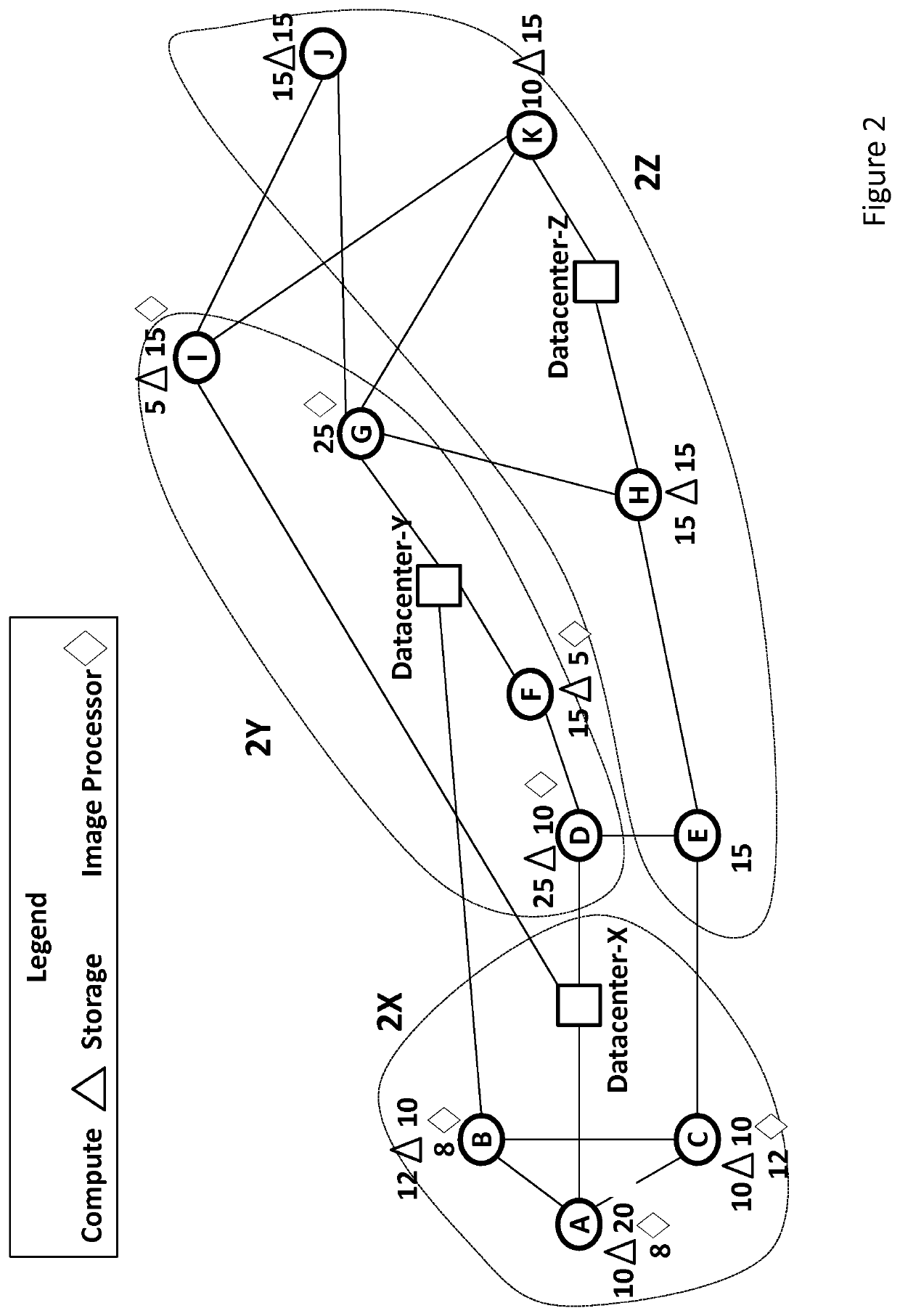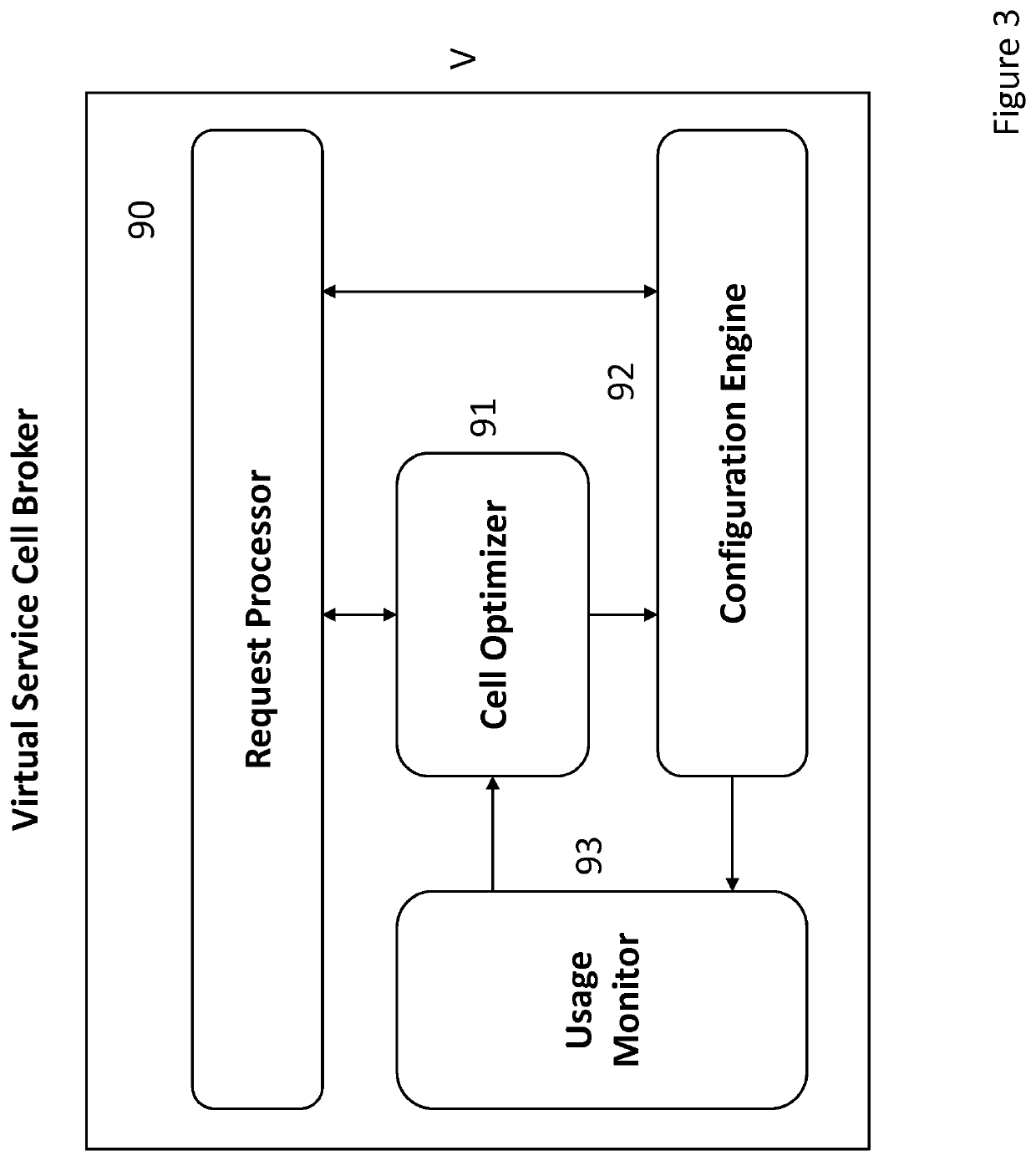Resource allocation
a technology for telecommunications networks and resources, applied in multi-programming arrangements, program control, instruments, etc., can solve problems such as inefficiency, change in the requirements of individual client systems, and increase the complexity of this problem, so as to reduce the overhead of reconfiguration, and reduce the complexity of datacentre services
- Summary
- Abstract
- Description
- Claims
- Application Information
AI Technical Summary
Benefits of technology
Problems solved by technology
Method used
Image
Examples
Embodiment Construction
The first and second sets of demand profiles referred to above are specified in detail in Table 1 later in this description.
FIG. 1 depicts the architecture of a geo-distributed cloud infrastructure having three datacentres X, Y, Z, and a number of network access nodes (labelled A to K) through which individual client systems communicate with the datacentres. Each data centre has a respective local resource management system 1x, 1y, 1z, whose operations are coordinated by a service placement manager W controlled by a Service Cell Broker V operating according to the invention, and as will be described with reference to FIGS. 3, 4 and 5.
FIG. 2 depicts an allocation of the network access nodes (A-K) of FIG. 1 to cells X, Y, Z, according to the requirements of the client systems of each node (A-K). For the purposes of illustration, each node has been assigned a set of service requirements, indicated by symbols as listed in the legend of FIG. 2, the numerical value associated with each sy...
PUM
 Login to View More
Login to View More Abstract
Description
Claims
Application Information
 Login to View More
Login to View More - R&D
- Intellectual Property
- Life Sciences
- Materials
- Tech Scout
- Unparalleled Data Quality
- Higher Quality Content
- 60% Fewer Hallucinations
Browse by: Latest US Patents, China's latest patents, Technical Efficacy Thesaurus, Application Domain, Technology Topic, Popular Technical Reports.
© 2025 PatSnap. All rights reserved.Legal|Privacy policy|Modern Slavery Act Transparency Statement|Sitemap|About US| Contact US: help@patsnap.com



